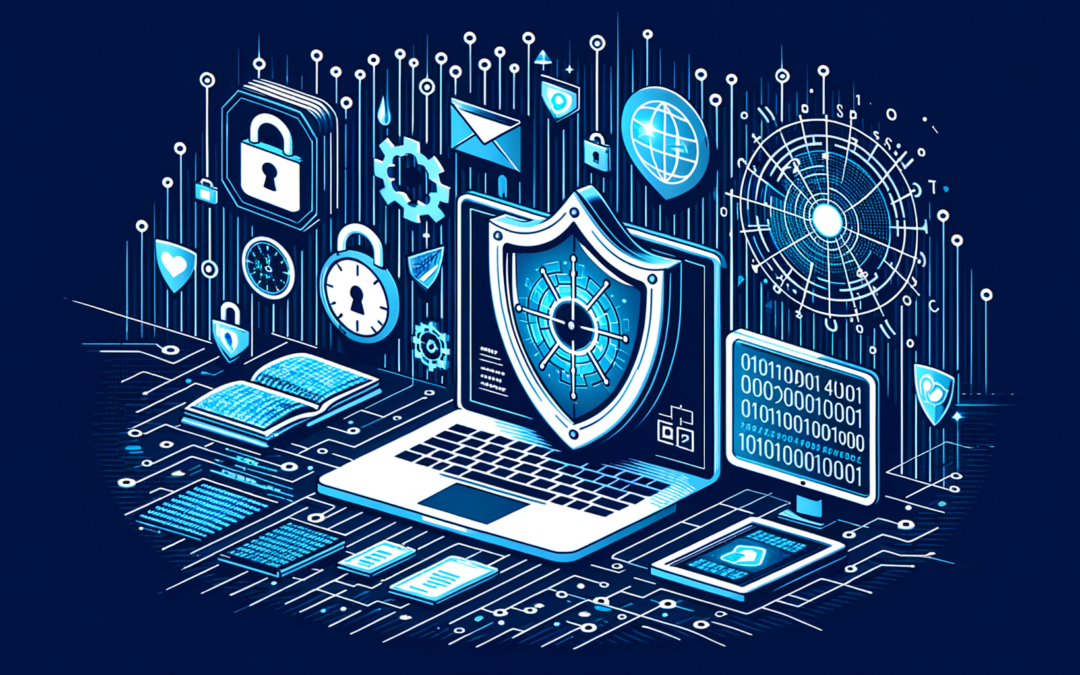Table Of Content

Deploying advanced authentication measures is crucial for organizations looking to bolster their cybersecurity defenses. However, in the process, many organizations inadvertently make errors that can compromise their security. This blog post explores six common mistakes organizations make when implementing advanced authentication and provides insights on avoiding them.
Failing to conduct a risk assessment
Deploying advanced authentication measures is crucial for organizations looking to enhance their cybersecurity defenses, especially considering human users as the weakest link. While implementing 2-factor authentication is a good starting point, many organizations may lack the necessary sophistication in authentication to adequately protect their data. In this process, certain mistakes can be made, and it is important to be aware of potential pitfalls.
- Importance of Risk Assessment:A comprehensive risk assessment is an essential initial step in any authentication implementation. Without this assessment, an organization is exposed to risks by not evaluating current threats, vulnerabilities, systems, necessary protections for various applications, and data. It is crucial to understand that not all applications require the same level of security; some may need stronger authentication measures based on the sensitivity of the data they handle.
- Categorizing and Prioritizing Authentication Needs:By conducting a risk assessment, organizations can effectively categorize and prioritize what requires additional authentication. For instance, users in different roles may not need access to all applications or data. Through role evaluation as part of a risk assessment, organizations can implement role-based access controls (RBAC). RBAC ensures that users are granted access only to the necessary data and applications based on their roles.
- Implementing Role-Based Access Controls:Roles play a crucial part in defining access levels within an organization. By implementing RBAC, organizations can streamline access privileges based on user roles, thereby enhancing security. This approach ensures that users are granted access only to the resources essential for their roles, reducing the risk of unauthorized data exposure.
Not completing due diligence to integrate authentication with current systems
When deploying advanced authentication measures, organizations must ensure compatibility with existing systems to establish a cohesive authentication framework. This involves adhering to industry-standard authentication methods and simplifying integration with toolkits to streamline the process.
- Ensuring compatibility with existing systems: Organizations need to consider the compatibility of advanced authentication measures with their current systems, including legacy systems. This ensures a seamless integration that spans the entire infrastructure, enhancing security across the board.
- Adhering to industry-standard authentication methods: It is crucial for organizations to follow industry-standard authentication methods, such as OIDC or SAML flows. By adopting these methods, organizations can enhance security and ensure a level of authentication sophistication that meets industry benchmarks.
- Simplifying integration with toolkits: Many vendors offer toolkits that simplify the integration of advanced authentication with existing systems. These toolkits help reduce implementation complexity, making the process more efficient and effective. By leveraging these tools, organizations can ensure a smooth transition to advanced authentication measures.
By completing due diligence in integrating authentication with current systems, organizations can enhance their overall security posture and protect valuable company assets from unauthorized access or data breaches.
Requiring only one authentication factor
When it comes to cybersecurity, deploying advanced authentication measures is crucial for organizations to address the weakest link in their security infrastructure: human users. While having some form of two-factor authentication is a good starting point, organizations may still lack the sophistication needed to adequately protect their data. Mistakes can happen during the implementation of advanced authentication methods, making it essential to be mindful of potential pitfalls.
Importance of multiple authentication factors
One common mistake organizations make is requiring only one authentication factor. In today’s security landscape, it is imperative to have at least two authentication factors to ensure robust security. Recommended additional factors include:
- Physical tokens: Devices like Yubikey or Google Titan tokens that generate digital signatures for added identity security.
- Biometric authentication: Factors such as fingerprints or facial recognition.
- Trusted devices: Ensuring that users are using trusted devices through device enrollment or verified certificates.
- High Trust factors: Utilizing technologies like BankID or Government e-ID for enhanced security.
It is essential to consider the sensitivity of data when selecting authentication factors. For highly sensitive information, a combination of multiple factors can offer greater security layers. On the other hand, less sensitive data may require simpler authentication methods like passwords paired with time-based one-time-password (TOTP) authenticator app codes or push notifications. Exploring passwordless authentication, which leverages alternative factors like biometrics or physical tokens for access, can also be a viable option.
Recommended additional factors
When it comes to enhancing security through advanced authentication, organizations must carefully evaluate the level of sensitivity of their data and choose appropriate authentication factors accordingly.
- Physical tokens: Devices like Yubikey or Google Titan tokens.
- Biometric authentication: Factors such as fingerprints or facial recognition.
- Trusted devices: Ensuring the use of trusted devices through device enrollment or verified certificates.
- High-Trust factors: Utilizing technologies like BankID or Government e-ID.
For highly sensitive data, a combination of multiple factors is recommended to provide a higher level of security. Conversely, less sensitive information may be accessed with simpler authentication methods, such as passwords paired with a time-based one-time-password authenticator app code or a push notification.
Considerations for data sensitivity
Organizations must take into account the sensitivity of their data when implementing authentication factors. By aligning the level of security with the importance of the data being protected, organizations can ensure a balanced approach to safeguarding their assets.
Forgetting about user experience
When organizations deploy advanced authentication measures, they often focus so much on security that they forget about the user experience. Balancing security and accessibility is crucial to ensure that users can access the systems they need without feeling overwhelmed by the authentication process. Prioritizing user-friendly solutions plays a significant role in enhancing the overall user experience and encouraging users to adhere to security protocols.
- Balancing security and accessibility: Organizations need to strike a balance between stringent security measures and ease of access for users. Implementing advanced authentication methods that are too complex or cumbersome can lead to user frustration and potential non-compliance. By finding the right balance, organizations can achieve both security and usability.
- Prioritizing user-friendly solutions: User-friendly authentication solutions are essential for a positive user experience. Clear instructions, intuitive interfaces, and self-service options can streamline the authentication process and make it more user-friendly. When users encounter minimal obstacles during the authentication process, they are more likely to adhere to security measures.
- Enhancing user experience with clear instructions: Providing clear instructions on setting up and using advanced authentication methods is key to enhancing the user experience. Step-by-step guidance, accompanied by screenshots and troubleshooting tips, can facilitate easy understanding and enrollment. Additionally, real-world examples of security breaches can raise awareness among users about the importance of following authentication protocols.
Not paying attention to authentication activities and patterns
When it comes to deploying advanced authentication measures, organizations need to be vigilant about avoiding common mistakes that could compromise their security. One critical area where organizations often falter is in neglecting to pay attention to authentication activities and patterns. By disregarding these crucial elements, organizations leave themselves vulnerable to cyber threats and unauthorized access.
Importance of regular monitoring and analysis
Regular monitoring and analysis of authentication activities are essential to maintaining the security of an organization’s systems and data. By staying abreast of user behaviors and authentication patterns, organizations can detect any abnormal or suspicious activities promptly. This proactive approach allows organizations to identify potential threats early on and take prompt action to mitigate them.
Utilizing IAM platforms and SIEM integrations
Identity and Access Management (IAM) platforms play a crucial role in providing organizations with insights into authentication activities. These platforms offer valuable logging data and dashboards that allow administrators to track user access and monitor for any unusual login patterns. Additionally, integrating IAM platforms with Security Information and Event Management (SIEM) systems enables organizations to receive real-time alerts about suspicious behavior and unauthorized access attempts. This integration enhances the organization’s ability to respond swiftly to potential security breaches.
Implementing risk-based authentication
Another effective strategy for enhancing authentication security is implementing risk-based authentication. This approach leverages machine learning algorithms to analyze user behavior and assign risk scores to login attempts. Login attempts with elevated risk scores trigger additional authentication requirements, while lower-risk logins may bypass certain authentication steps. By dynamically adjusting security measures based on risk levels, organizations can bolster their defenses against evolving cyber threats and ensure secure access to sensitive data.
By prioritizing regular monitoring and analysis, leveraging IAM platforms with SIEM integrations, and implementing risk-based authentication, organizations can significantly enhance their authentication security posture and better protect their valuable assets from unauthorized access and data breaches.
Neglecting to Train and Educate Users
When it comes to enhancing overall security within an organization, neglecting to properly train and educate users on advanced authentication methods can lead to significant vulnerabilities. By investing in user training, organizations can fortify their defenses and protect valuable company assets effectively.
Providing clear and user-friendly documentation is key to ensuring that users understand how to set up and utilize advanced authentication measures. This documentation should include step-by-step instructions, screenshots, and troubleshooting tips to simplify the enrollment process for users.
Highlighting real-world examples and case studies of security breaches can bring heightened awareness to users about the potential consequences of not following secure authentication practices. By demonstrating the impact of security lapses, users are more likely to engage proactively in authentication processes.
Promoting a culture of security awareness and vigilance among users is crucial for instilling a sense of responsibility and encouraging active participation in authentication protocols. When users understand the importance of their role in maintaining security, they are more likely to comply with best practices and remain vigilant against potential threats.
In conclusion, neglecting to train and educate users on advanced authentication methods can leave organizations vulnerable to security breaches. By investing in user training, providing clear documentation, and promoting a culture of security awareness, organizations can significantly enhance their security posture and protect against unauthorized access or data breaches.
TL;DR:
Neglecting user training on advanced authentication can lead to security vulnerabilities. Clear documentation, real-world examples, and a culture of security awareness are essential to enhancing security within organizations.
Secure Your Organization with Juncyber
Are you ready to bolster your cybersecurity defenses and protect your valuable data from unauthorized access? Don’t let common authentication mistakes put your organization at risk. At Juncyber, we offer expert guidance and advanced solutions to ensure your authentication measures are robust and effective.
Secure Your Future with Juncyber. Your data is our priority.
Link to the original article: https://thehackernews.com/2024/05/6-mistakes-organizations-make-when.html



